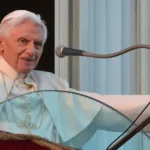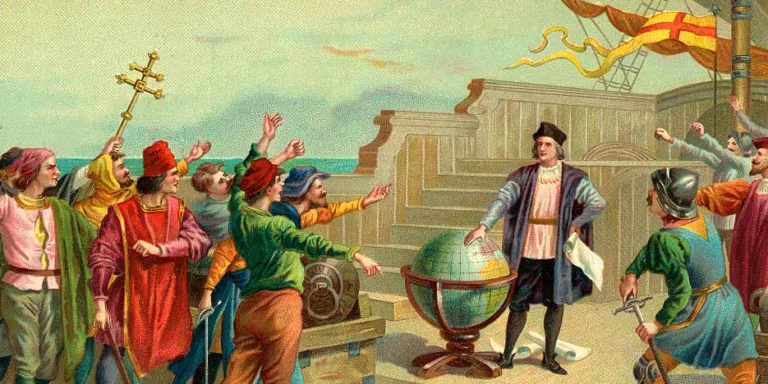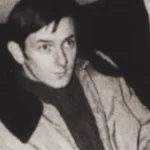The story of the atomic bomb is a complex one, interwoven with scientific breakthroughs, Political Maneuvering, and profound ethical dilemmas. At its heart lies the figure of Albert Einstein, a name synonymous with genius and a legacy that extends far beyond his groundbreaking theories of relativity. While he never directly participated in The Manhattan Project, the secret program responsible for developing the first atomic bombs, Einstein’s actions had a profound impact on the course of history.
In 1939, Einstein, along with physicist Leo Szilard, sent a letter to President Franklin D. Roosevelt warning him about the potential for Nazi Germany to develop an atomic bomb before The United States. This letter, driven by a sense of urgency and a desire to prevent a Catastrophic Arms Race, ultimately led to the establishment of The Manhattan Project. Einstein’s involvement in this early stage, though well-intentioned, sparked a debate that continues to this day: Did Albert Einstein invent the atomic bomb?
The answer, as with many complex historical events, is nuanced. While Einstein did not directly contribute to the scientific development or construction of the bomb, his warning letter played a crucial role in setting the stage for Its Creation. Later in life, Einstein deeply regretted his involvement, famously calling the letter “the one great mistake in my life.” He became a vocal advocate for Nuclear Disarmament, recognizing the immense destructive power unleashed by the atomic age and the urgent need for global peace.
Einstein’s Warning Letter
Einstein’s warning letter to President Roosevelt was a pivotal moment in history, setting in motion events that would irrevocably change the world. Written in August 1939, just weeks before the outbreak of World War Ii, it outlined the potential dangers of nuclear fission and the possibility that Nazi Germany could harness this power for devastating weapons. Einstein, deeply concerned about the implications of Unchecked Scientific Progress, urged Roosevelt to initiate research into Atomic Energy, emphasizing the urgency of outpacing any potential German advancements.
The letter was not simply a Scientific Warning; it carried a heavy weight of Moral Responsibility. Einstein and Szilard understood that the consequences of nuclear war were unimaginable. They believed that by alerting Roosevelt to the threat, they could prevent a global catastrophe. While their intentions were noble, the letter’s impact was profound and far-reaching. It sparked a chain reaction of events that ultimately led to The Manhattan Project, the top-secret program responsible for developing the First Atomic Bombs.
The letter itself remains a powerful testament to Einstein’s foresight and his unwavering commitment to peace. While he later expressed regret for his role in initiating the nuclear Arms Race, it is undeniable that Einstein’S Warning Letter played a crucial role in shaping the course of history.
The Manhattan Project
Following Einstein’s Warning Letter, President Roosevelt authorized the formation of The Manhattan Project in 1942. This top-secret program brought together some of the world’s brightest minds in physics, engineering, and chemistry to race against time and develop an atomic bomb before Nazi Germany could. The project was shrouded in secrecy, with research and development taking place at various locations across The United States.
The Manhattan Project faced immense challenges: harnessing the power of nuclear fission, designing a weapon capable of delivering this energy, and overcoming logistical hurdles on a Grand Scale. Scientists like J. Robert Oppenheimer led the effort, facing intense pressure to succeed in Their Mission. The project’s success ultimately hinged on breakthroughs in Theoretical Physics, Engineering Innovations, and the tireless work of thousands of scientists, engineers, and technicians.
By 1945, the Manhattan Project Had Achieved Its Goal: the creation of two atomic bombs, “Little Boy” and “Fat Man.” These weapons would forever change the course of human history, marking a new era of unprecedented Destructive Power. The use of these bombs against Hiroshima and Nagasaki in August 1945 brought World War Ii to an end but also ushered in the terrifying reality of nuclear war.
 Religious Figures: Shaping Faith & History
Religious Figures: Shaping Faith & HistoryNuclear Research And Development
Einstein’s warning letter ignited a global race for nuclear supremacy. While The United States focused on developing the atomic bomb through The Manhattan Project, Other Countries, including Great Britain and The Soviet Union, Also Poured Resources Into nuclear research and development. This intensified competition fueled a period of rapid scientific advancement, pushing the boundaries of understanding in physics and engineering.
The pursuit of nuclear energy was driven by both military and civilian goals. Governments saw its potential for weaponization, while scientists envisioned its applications in power generation and other fields. This dual-purpose nature of nuclear technology created ethical dilemmas and sparked international debates about control and disarmament.
In the decades following World War Ii, the world witnessed a proliferation of Nuclear Weapons, escalating tensions and anxieties about global annihilation. The Cold War became a period of intense rivalry between The United States and The Soviet Union, each seeking to outmatch the other in nuclear capabilities. This arms race underscored the profound impact of Einstein’s Warning Letter, highlighting the urgent need for international cooperation and responsible stewardship of this Powerful Technology.
Ethical Implications of the Bomb
The creation of the atomic bomb unleashed a wave of ethical dilemmas that continue to resonate today. While some argued that its development was necessary to prevent Nazi Germany from acquiring this devastating weapon, the immense destructive power it unleashed raised profound questions about the morality of such technology.
Einstein, deeply troubled by the consequences of His Involvement, became a vocal advocate for nuclear disarmament, warning against the dangers of an Unchecked Arms Race. He understood the ethical imperative to prevent the use of atomic weapons and advocated for international cooperation to control this powerful force. The bombings of Hiroshima and Nagasaki served as a stark reminder of the human cost of nuclear war, forcing the world to confront the devastating consequences of such weaponry.
The Ethical Implications of the bomb extend far beyond Its Immediate Use. Issues surrounding nuclear proliferation, the potential for accidental detonation, and the long-term environmental impact continue to be debated and explored. The development of nuclear weapons has fundamentally altered the global landscape, raising profound questions about the nature of war, peace, and human responsibility.
Legacy of a Scientific Revolution
The development of the atomic bomb marked a turning point in human history, ushering in a new era defined by both immense scientific progress and Profound Ethical Challenges. Einstein’s warning letter sparked a chain reaction that transformed the global landscape, leading to a period of intense nuclear research and development, as well as a heightened awareness of the potential for both destruction and innovation inherent in scientific discovery.
The legacy of this scientific revolution continues to shape our world today. Nuclear energy remains a source of Power Generation, while advancements in related fields have led to breakthroughs in medicine, Materials Science, and other areas. However, the shadow of nuclear weapons looms large, serving as a constant reminder of the need for international cooperation, responsible stewardship of technology, and ongoing efforts to prevent nuclear proliferation.
Einstein’s story serves as a poignant reminder that scientific progress is not merely a matter of technological advancement but also a complex interplay of Ethical Considerations, Human Responsibility, and the pursuit of peace. His warning letter remains a powerful testament to the enduring impact of individual action and the profound consequences that can arise from scientific discoveries.
More for curious minds
Unlock extra content and exclusive deals tailored to your interests.










